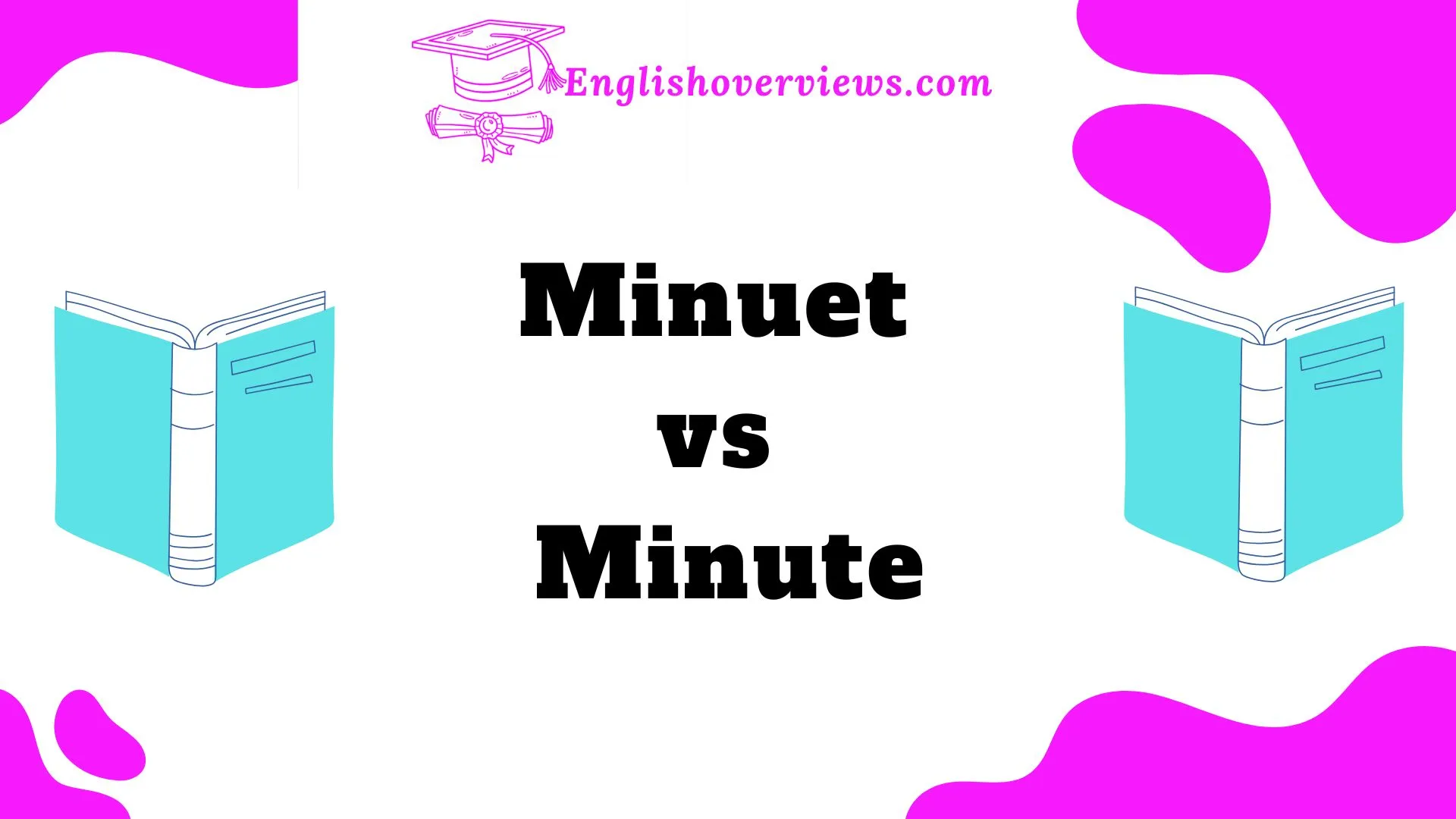Understanding the difference between minuet and minute might seem tricky at first, but it’s simpler than you think. These two words look and sound similar, yet their meanings couldn’t be more different.
One refers to an elegant dance and a musical form, while the other is all about time or something tiny. Confusing? Don’t worry—we’ll break it all down for you.
In this guide, we’ll explore the meanings, origins, and contexts of these words, along with real-world examples. By the end, you’ll know how to use them confidently in both writing and conversation.
Plus, we’ll provide helpful comparisons, historical insights, and even tables to make the differences crystal clear. So, let’s dive into the fascinating worlds of minuet and minute!
What is a Minuet?
Definition and Meaning of Minuet
A minuet is a type of dance and musical composition that originated in France during the 17th century. The word itself comes from the French term menu, meaning “small” or “dainty,” which perfectly describes the light and graceful movements of the dance.
Historical Background of the Minuet
The minuet dance first gained popularity in the courts of Louis XIV. Known for its elegance and refinement, it quickly became a staple of European royal gatherings. Over time, the dance transitioned into a musical form, often featured in suites and symphonies.
Notable Facts About Minuet History:
- The minuet was originally performed as a social dance by couples in ballrooms.
- By the 18th century, composers like Johann Sebastian Bach, Wolfgang Amadeus Mozart, and Ludwig van Beethoven incorporated minuets into their musical works.
- The minuet often appeared as the third movement in classical symphonies and string quartets.
Musical Characteristics of the Minuet
Musically, a minuet is characterized by:
- Time Signature: Always in 3/4 time (a triple meter).
- Tempo: Moderately slow and deliberate, emphasizing graceful movements.
- Structure: Typically follows an A-B-A form, where the A section (minuet) is followed by a contrasting B section (trio) and returns to the A section.
Example of a Minuet in Music:
- Minuet in G Major by Bach: A timeless example of a simple yet elegant minuet.
- Mozart’s Symphony No. 41 includes a lively minuet in its third movement.
| Composer | Famous Minuet Composition | Era |
| Johann Sebastian Bach | Minuet in G Major | Baroque |
| Wolfgang A. Mozart | Symphony No. 41 (Minuet Movement) | Classical |
| Ludwig van Beethoven | Minuet in G Major | Classical |
What is a Minute?
Definition and Usage of Minute in Time
The word minute is most commonly associated with time. A minute is defined as 60 seconds, or 1/60th of an hour. It plays a crucial role in modern timekeeping and scheduling.
Key Facts About Minutes in Time:
- The concept of dividing time into hours and minutes dates back to ancient Babylonian civilization.
- Modern clocks and watches rely on minutes to provide precise measurements of time.
Minute as a Small Detail
Apart from its association with time, minute can also mean small, tiny, or meticulous. For instance:
- “The detective paid minute attention to every clue.”
Real-World Examples:
- Time Usage: “We’ll meet in five minutes.”
- Descriptive Usage: “Her handwriting was so minute that it was almost unreadable.”
Pronunciation Variations of Minute
One common source of confusion lies in the pronunciation of minute:
- Time: Pronounced as MIN-it
- Small Detail: Pronounced as my-NOOT
Comparison of Minuet vs. Minute
Understanding the key differences between minuet and minute can save you from common mix-ups.
| Aspect | Minuet | Minute |
| Meaning | A dance or musical form | Unit of time (60 seconds); small detail |
| Pronunciation | MIN-you-et | MIN-it (time); my-NOOT (small) |
| Context | Music, dance, history | Everyday language, timekeeping |
| Usage Examples | “The minuet was performed elegantly.” | “I’ll be there in a minute.” |
Real-World Case Study
Scenario: You’re writing a story set in the 18th century. The characters perform a minuet during a royal ball. Later, another character says, “I’ll return in a minute.”
Result: Knowing the difference helps you avoid historical inaccuracies or awkward phrasing.
Contemporary Relevance of Minuet and Minute
Modern Uses of Minuet
Although the minuet is no longer a common social dance, it survives as:
- A historical reenactment at cultural events.
- A musical form studied by music students and performed in classical concerts.
Minute in Modern Communication
The word minute is essential in scheduling, science, and everyday conversation. Examples include:
- “Let’s take a minute to review the report.”
- “The team analyzed every minute detail of the project.”
Examples to Clarify Usage
Here are some practical examples to illustrate the difference:
- Minuet:
- “The orchestra played a beautiful minuet by Mozart.”
- “During the ball, they danced a formal minuet.”
- Minute:
- “It’ll only take a minute to complete.”
- “She examined the painting with minute precision.”
FAQs
What is the main difference between minuet and minute?
Minuet refers to a type of dance or musical composition, while minute typically relates to time or something tiny.
How do you pronounce minuet and minute?
- Minuet: MIN-you-et
- Minute (time): MIN-it
- Minute (small): my-NOOT
Are there still minuets in modern music?
Yes, minuets can be found in classical music and are studied in music education.
Can “minute” be used to describe both time and size?
Absolutely. Context determines whether minute refers to 60 seconds or something tiny.
Conclusion
Understanding the difference between minuet and minute may seem daunting at first, but breaking it down makes it easy to master. While minuet refers to a graceful dance and musical form steeped in history, minute primarily relates to time or something small and detailed.
The context, pronunciation, and spelling guide their usage, making them distinct despite their visual and phonetic similarities.
Whether you’re discussing a minuet composed by Mozart or managing your schedule down to the last minute, knowing these distinctions ensures clarity in both spoken and written communication. Plus, you’ve now gained some fascinating historical and musical knowledge to impress in conversations!

English Overviews is a resourceful website dedicated to providing valuable content related to grammar and vocabulary. AD has made notable contributions, sharing insights on various subjects, including WordPress themes and plugins. The primary goal of the site is to help users improve their English language skills effectively.











